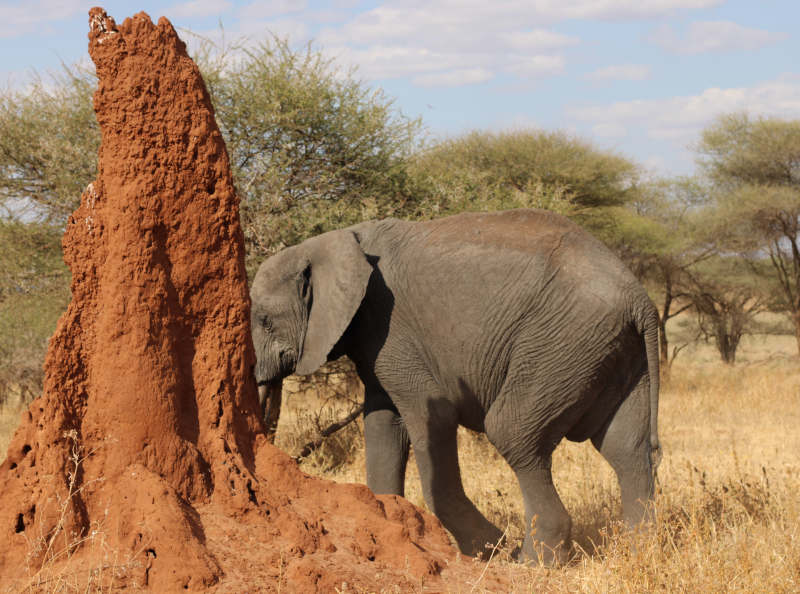
Unlocking the Marvels of Ngorongoro National Park: A Comprehensive Guide
Nestled in the heart of Tanzania, Ngorongoro National Park is a captivating wonderland that boasts unparalleled natural beauty, diverse wildlife, and breathtaking landscapes. Spanning over 8,000 square kilometers, this UNESCO World Heritage Site encompasses the stunning Ngorongoro Crater, a volcanic caldera teeming with wildlife and surrounded by picturesque plains and forests. Whether you're a seasoned safari enthusiast or a first-time visitor, Ngorongoro promises an unforgettable journey into the heart of Africa's wilderness.
Best Time to Visit
Choosing the best time to visit Ngorongoro National Park is crucial for optimizing your safari experience. The dry season, from June to September, is considered the optimal time for wildlife viewing as animals congregate around water sources, making them easier to spot against the backdrop of the crater's landscape. Additionally, the dry season offers clear skies and cooler temperatures, perfect for outdoor activities and photography.
Packing List and Weather
When preparing for your adventure in Ngorongoro National Park, it's essential to pack appropriately for the climate and activities. Here's a suggested packing list:
The weather in Ngorongoro National Park varies throughout the year. During the dry season, temperatures range from 10°C to 25°C (50°F to 77°F), while the wet season, from November to May, brings occasional rain showers and slightly warmer temperatures.
Safety Tips
While Ngorongoro National Park offers a thrilling safari experience, it's essential to prioritize safety during your visit. Here are some safety tips to keep in mind:
Duration of Stay
The ideal duration for exploring Ngorongoro National Park depends on your interests and itinerary. While some visitors opt for a day trip to experience the highlights of the crater, others choose to spend multiple days immersing themselves in its natural wonders. A minimum of two to three days allows for a more comprehensive exploration of the park's diverse ecosystems and wildlife.
Accommodation Types
Ngorongoro National Park offers a range of accommodation options to suit every traveler's preference and budget. From luxury lodges perched on the crater rim to tented camps nestled in the wilderness, you'll find the perfect retreat after a day of adventure. Some popular accommodation choices include:
Activities in Ngorongoro
Ngorongoro National Park offers an array of activities to suit every traveler's interests. Whether you're embarking on a game drive through the crater, hiking along scenic trails, or visiting local Maasai villages, there's no shortage of adventures to be had. Some popular activities include:
Popular Wildlife and Their Uniqueness
Ngorongoro National Park is renowned for its abundant wildlife, including some of Africa's most iconic species. Some of the most popular animals found in the park include:
Each species in Ngorongoro National Park has its own unique adaptations and survival strategies. From the lions' stealthy hunting techniques to the elephants' complex social structures, every animal plays a vital role in the park's ecosystem.
Lifespan and Survival Mode
The lifespan of animals in Ngorongoro National Park varies depending on factors such as species, habitat, and environmental conditions. Lions typically live between 10 to 14 years in the wild, while elephants can live up to 70 years or more. Buffaloes have a lifespan of around 20 to 25 years, while hippos can live up to 40 years in the wild.
Survival in Ngorongoro requires adaptation to the park's diverse ecosystems and the ability to navigate its challenges. From the harsh conditions of the crater floor to the lush vegetation along its rim, animals must rely on their instincts and physical adaptations to thrive. Whether it's the lions' hunting prowess, the elephants' intelligence and tight-knit social bonds, the buffaloes' resilience in the face of predators, or the hippos' amphibious lifestyle, each species has evolved remarkable strategies for survival in their natural habitat.
Conclusion
Ngorongoro National Park stands as a testament to the untamed beauty and remarkable biodiversity of Tanzania's wilderness. From the sweeping plains of the crater floor to the mist-shrouded forests on its rim, every corner of the park tells a story of resilience, adaptation, and interconnectedness. Whether you're marveling at the sight of a lioness and her cubs, witnessing the majestic migration of wildebeests, or simply basking in the serenity of the African savannah, Ngorongoro offers an immersive safari experience that will leave you in awe.
As you plan your visit to Ngorongoro National Park, consider the best time to explore its wonders, pack accordingly for the climate and activities, and prioritize safety at all times. With a range of accommodation options to suit every preference, as well as a variety of activities to engage in, Ngorongoro promises an unforgettable journey into the heart of Africa's wilderness. So, pack your bags, embark on a safari adventure of a lifetime, and prepare to be captivated by the natural splendor of Ngorongoro National Park.